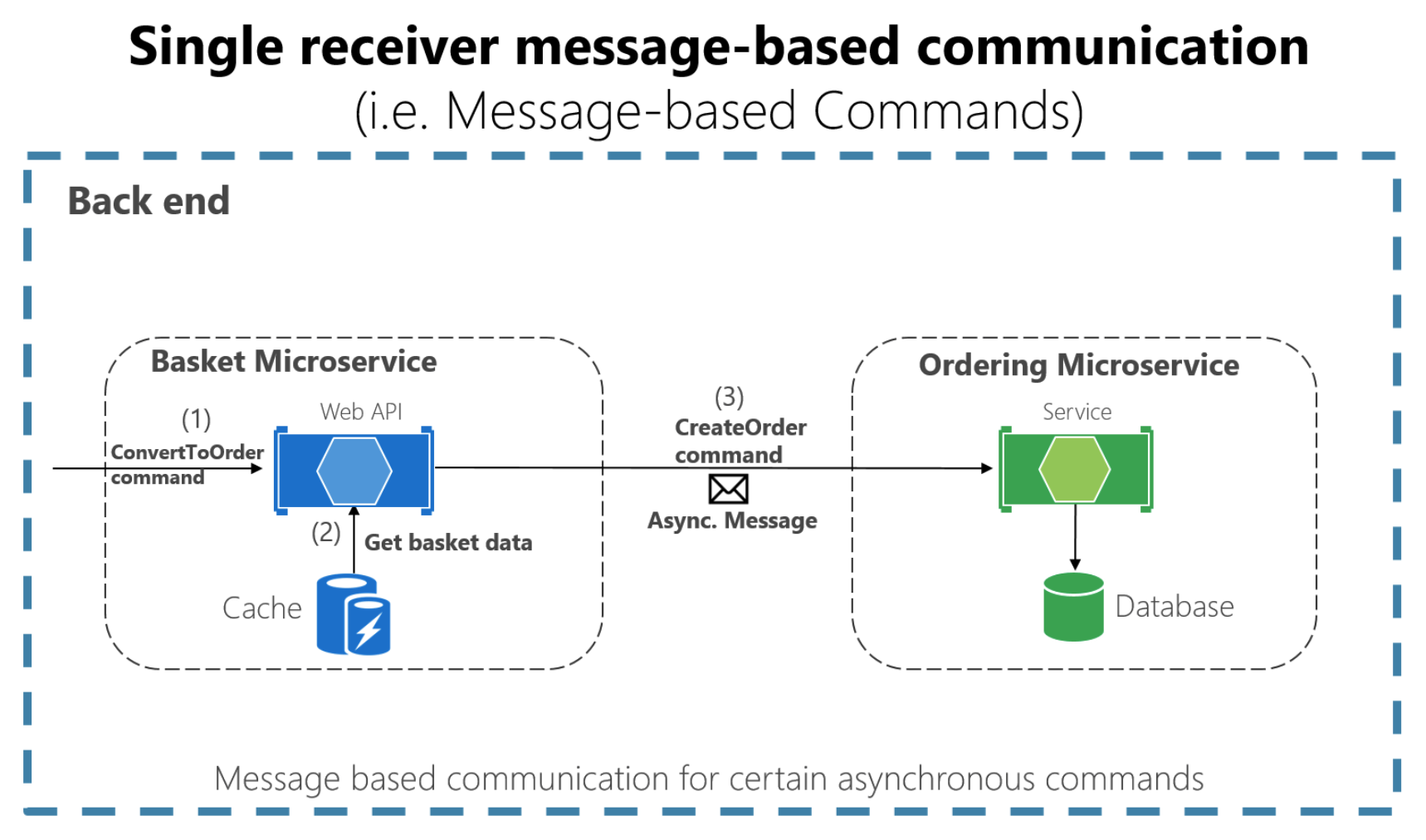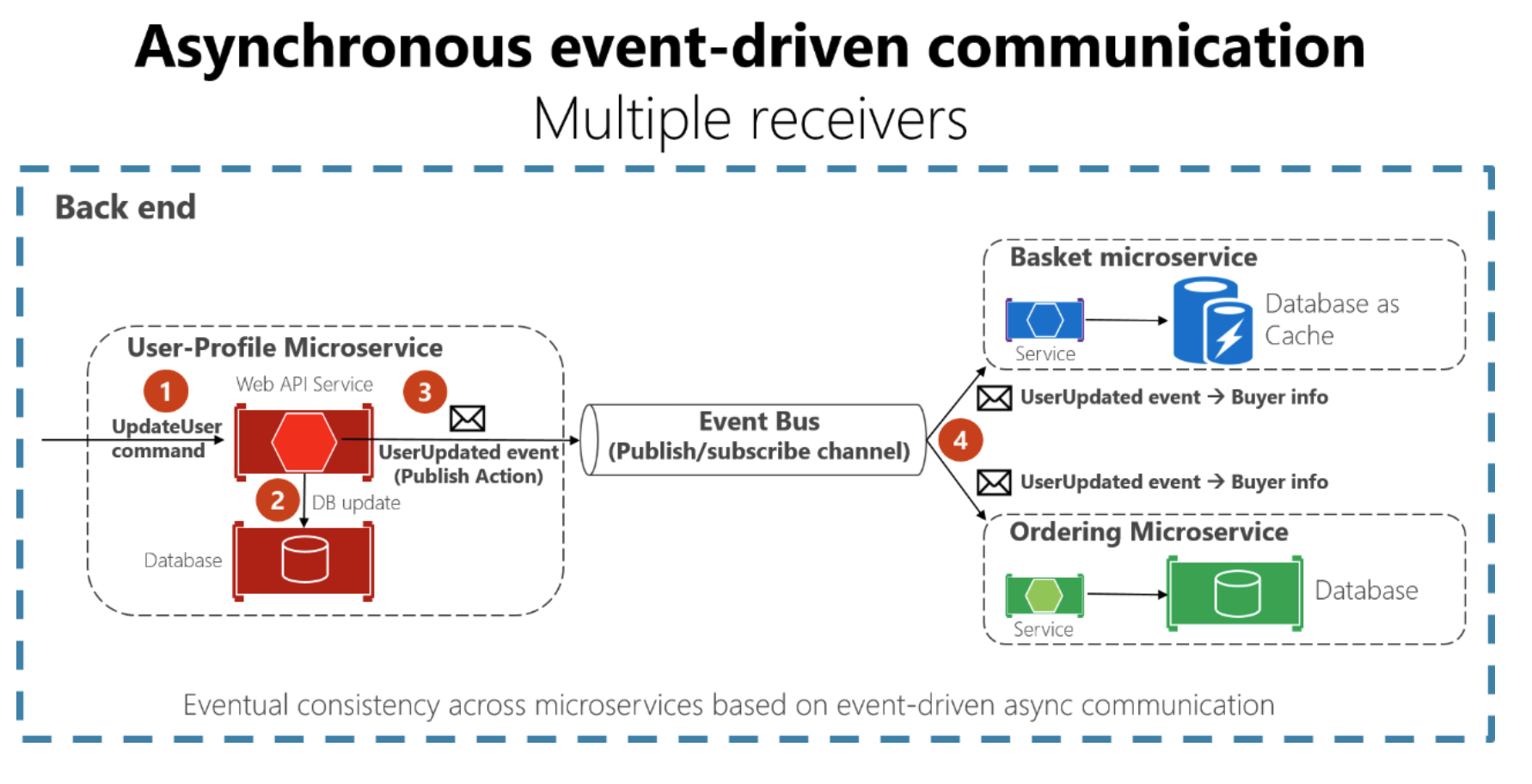Communication
The microservice community promotes the philosophy of "smart endpoints and dumb pipes" This slogan encourages a design that's as decoupled as possible between microservices, and as cohesive as possible within a single microservice.
The two commonly used protocols are
-
HTTP request/response with resource APIs (when querying most of all)
-
lightweight asynchronous messaging when communicating updates across multiple microservices.
Communication styles
There are many protocols and choices you can use for communication, depending on the communication type you want to use.
If you're using a synchronous request/response-based communication mechanism, protocols such as HTTP and REST approaches are the most common, especially if you're publishing your services outside the Docker host or microservice cluster.
If you're communicating between services internally (within your Docker host or microservices cluster), you might also want to use binary format communication mechanisms (like WCF using TCP and binary format). Alternatively, you can use asynchronous, message-based communication mechanisms such as AMQP.
Communication types
The first axis defines if the protocol is synchronous or asynchronous:
Synchronous protocol. HTTP is a synchronous protocol. The client sends a request and waits for a response from the service.
Asynchronous protocol. The client code or message sender usually doesn't wait for a response. It just sends the message as when sending a message to a RabbitMQ queue or any other message broker.
The second axis defines if the communication has a single receiver or multiple receivers:
Single receiver. Each request must be processed by exactly one receiver or service. An example of this communication is the Command pattern.
Multiple receivers. Each request can be processed by zero to multiple receivers. This type of communication must be asynchronous. An example is the publish/subscribe mechanism used in patterns like Event-driven architecture. This is based on an event-bus interface or message broker when propagating data updates between multiple microservices through events.
Asynchronous message-based communication
There are 2 rules:
-
use lightweight message broker. most of the "smart" thinking still lives in the endpoints that are producing and consuming messages-that is, in the microservices.
-
use only asynchronous messaging between the internal services, and to use synchronous communication (such as HTTP) only from the client apps to the front-end services
There are two kinds of asynchronous messaging communication:
-
single receiver message-based communication
-
multiple receivers message-based communication
Single receiver message-based communication

Attention: Due to network or other failures, the client has to be able to retry sending messages, and the server has to implement an operation to be idempotent in order to process a particular message just once.
Multiple receivers message-based communication

The goal is to have eventual consistency between multiple data sources across your distributed system.
When you use an event bus, you might want to use an abstraction level (like an event bus interface) based on a related implementation in classes with code using the API from a message broker like RabbitMQ or a service bus like Azure Service Bus with Topics. Alternatively, you might want to use a higher-level service bus like NServiceBus, MassTransit, or Brighter to articulate your event bus and publish/subscribe system.
A challenge when implementing an event-driven architecture across multiple microservices is how to atomically update state in the original microservice while resiliently publishing its related integration event into the event bus, somehow based on transactions.
API Versioning
If you're using an HTTP-based mechanism such as REST, one approach is to embed the API version number in the URL or into an HTTP header. A good approach for this functionality is the Mediator pattern (for example, MediatR library) to decouple the different implementation versions into independent handlers.
Finally, if you're using a REST architecture, Hypermedia is the best solution for versioning your services and allowing evolvable APIs.
Microservices addressability and the service registry
Each microservice has a unique name (URL) that's used to resolve its location. There needs to be a service registry.
The registry is a database containing the network locations of service instances. A service registry needs to be highly available and up-to-date. Clients could cache network locations obtained from the service registry.